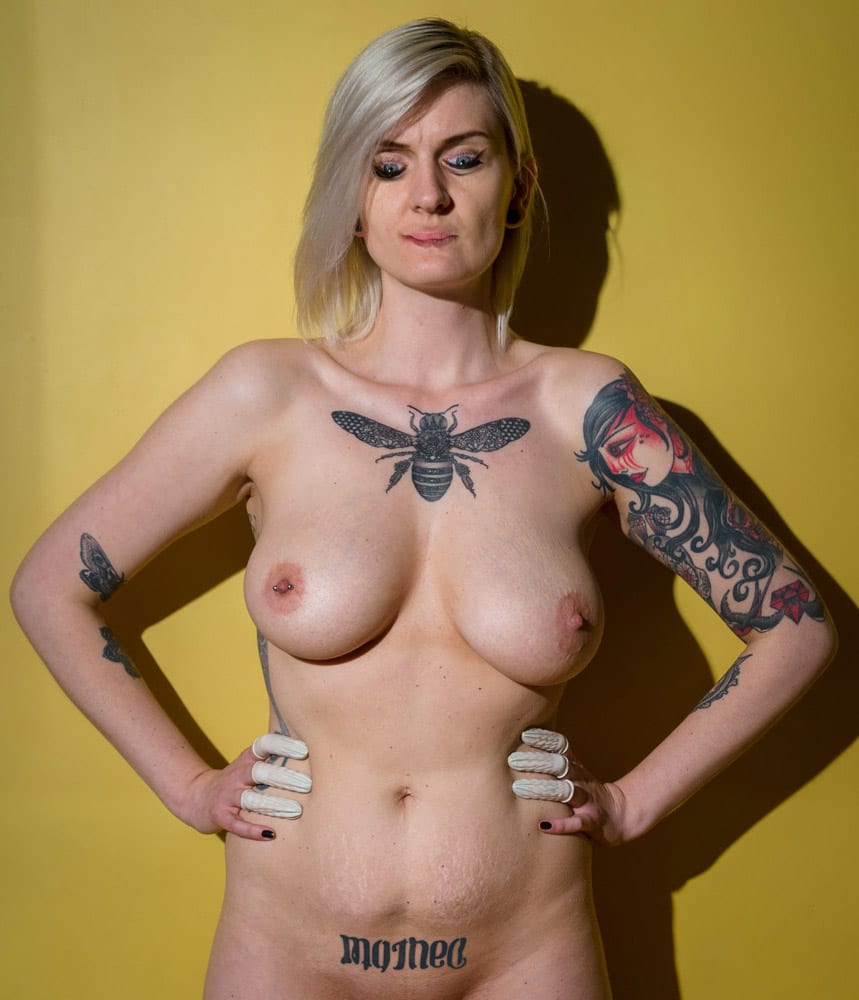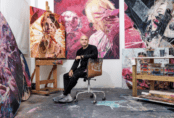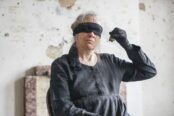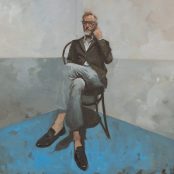[dropcap style=”font-size:100px; color:#992211;”]A[/dropcap]n ambigram is a typological design that can be read in more than one direction and retain meaning. There are several different types of ambigrams but the most common ones are those that can be rotated or mirrored.
In 2017 I did a project of upside down portraits, entitled Downside Up. The idea first came to me, while viewing my Instagram feed. I would sometimes see upside down selfies and feel compelled to turn the phone round. They were never worth the effort but it made me wonder if I could create something that was. I remembered a programme on psychology I had seen many years previously that showed the Thatcher Illusion. Named as such because the psychologist who realised it first demonstrated it on a picture of Margaret Thatcher. The photo is presented upside down and the eyes and mouth are flipped vertically. In this orientation humans could not identify the distortion until the image was rotated the right way round again.
My portraits were interesting but unsatisfying because it did not have the complexity I like in photographs. Just as I was finishing my Downside Up series, I was looking through one of my old art books, when I came across a chapter on the ambigrams of Scott Kim for the umpteenth time and suddenly knew this was the way to go.

I started researching them and quickly found ambigrams were used as tattoos as well. Not only were the ambigrams interesting but the other tattoos on the person, including the mottos or quotations on their bodies, spoke volumes about their psychology and character. I realised that this was the extra layer I was looking for to lift the concept and set about creating this body of work of which this is the first part.
What I also found was that there had been a bit of a fad around ambigrams a few years earlier with the release of Dan Brown’s book then film (2009), Angels and Demons. In it the four leading contenders to replace the deceased Pope are kidnapped and turn up dead one at a time with an ambigram branded on their chests. The graphic designer, John Langdon created those ambigrams as well as the one on the book cover.

The upside down pictures would work well on smart phone or or page but these pictures are ultimately destined for the gallery wall. In which case the viewer will need to stand on their head to decipher the tattoos, or better still photograph them with their smart phones and try to stop the image from revolving when they turn them round.
I am largely self-taught and after a slow start I began working for magazines, won the Vogue Sotheby’s Cecil Beaton Award for young photographers with my series of shoe pictures, entitled, The Fetish. In 2001 I had a book of my work published, Bernadinism: How to Dominate Men and Subjugate Women, for which I won Erotic Photographer of the Year in Britain. Since then I have leaned more towards erotic photography.


















